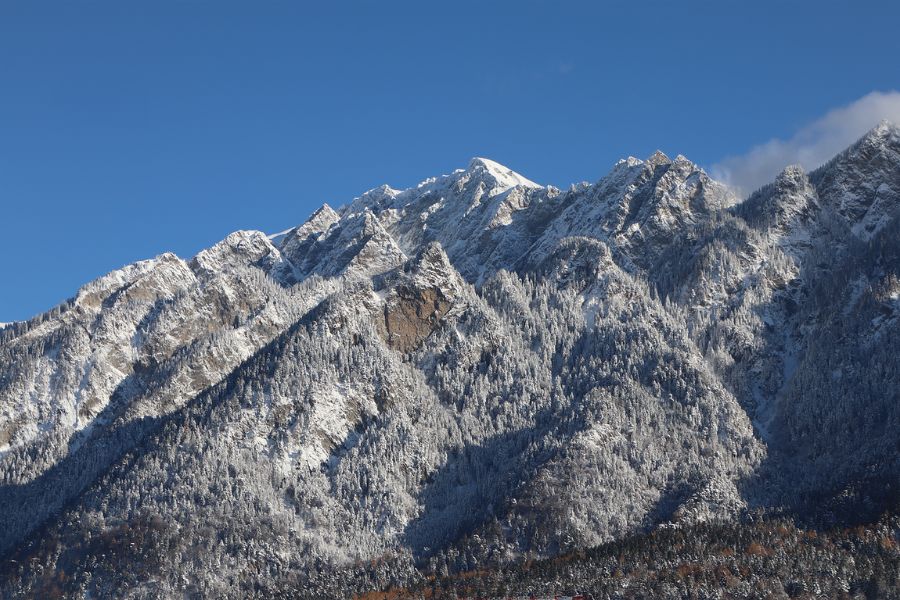Many venture into the backcountry every year only to experience cold days and even colder nights. Many think they just need more clothes, or that they need a fire, or a better sleeping bag. But when done incorrectly, none of these will help without first strategizing how you will stay warm.
So in this article, we will take a look at how to stay warm in the backcountry at night, during the day, and in an emergency.
Clothing
Clothing has a common fallacy around it. It goes something like this: If you are cold, put more clothes on, and if you are hot, take clothes off. The problem with this is that clothing doesn’t necessarily work that way. You can’t just add more and more clothes and hope you will get warmer, you need to put them on with strategy.
The first thing you need is a base layer. Simply put, it is the layer closest to your skin. In the warmer months, a base layer is not required, but in the colder months, a base layer, and a heavy base layer at that, is essential. These layers should be made of either wool or synthetic as these will wick sweat from your skin and trap heat close to your skin.
Here is a good set of base layers pants and a shirt
The next layer you will need is an insulation or puffy layer. This is usually on the outside of your shell layer (more on the shell layer later), or if you are in really cold weather, can go next to your base layer to assist in trapping heat. These layers are made of down feathers and are extremely good at trapping in the heat, but aren’t good at blocking the cold or stopping the wind.
Here is a good puffy pant and jacket
After you have a puffy pant and a jacket, you need a way to keep the wind, rain, and other elements from taking away all your heat. To do this you need a shell layer. This layer will help block wind, block most moisture, and keep your body heat from being drained from you.
Here is a good jacket and pant
The last things you need is gloves, socks, and a hat. Between these three areas of you body, between 50-80% of your body heat can be lost. Investing in a high quality pair of gloves, heavy wool socks, and a heavy wool stalking cap could be a literal life saver in the back country.
Here are my favorite gloves, socks, and hat
Sleeping
Other than adding more clothes when you sleep, there are a few key tips that can help you stay warm during the coldest time of the day.
Getting a 4 season tent that is made for winter and snowy conditions can help to keep you warm. This kind of tent will block the colder winds and keep the snow from collapsing your shelter.
When nightfall comes, and temperatures start to plummet, then having a heat source by you can be a great help. This can be in the form of putting boiling water in a cup, sealing that cup, and stuffing it down your sleeping bag next to you. Or it could be a nearby campfire by your tent.
Another, and more obvious, way to stay warmer is to increase, or more accurately decrease, the temperature rating on your sleeping bag. This means that instead of sleeping in a 20-degree bag, you sleep in a 0-degree bag. A general rule of thumb is that you want a sleeping bag that is rated for at least 20 degrees lower than the lowest temperature you will see (I.E. if at night it gets down to 20 degrees, you will want a 0-degree bag).
One quick, and cheaper, solution to stay warmer, without getting a new sleeping bag, is getting a sleeping bag liner. Liners often only cost 50-100 dollars and can even help keep your sleeping bag clean as well as make it more comfortable and warmer.
The last trick you can employ would be a larger sleeping pad. The ground will take the warmth from your body because it is cold. Therefore, separating yourself from the ground by a greater distance, or with an insulated sleeping pad, can help keep you warm.
Emergency
Hopefully, your trip will never come to the point where you have to warm up to survive. But if it does, here is what you can do:
Firstly, stay as dry as possible. Avoid rain, crossing streams, having snow melt on your clothes, etc. When water is on or next to your body it tends to want to take the heat away from you, this is why it is so important to stay dry. You can help stay dry by keeping a tarp on you to stay out of the rain and having rain pants and a rain jacket.
The second thing that will help is a fire. Staying next to a fire will warm you as well as boost your morale. However, even the best outdoorsmen are unable to start a fire at times. So bringing cotton balls, fat rope, fire puddy or other forms of fire starters can greatly help your chances of starting a fire and even save your life.
The third thing you can do is get moving. This can be as simple as walking figure 8s or circles around a small area, or moving miles at a time to get back to your truck. Either way, when you start moving, you will start warming up. But keep in mind this will burn calories so make sure you have the food to replace the calories you burn.
Conclusion
Staying warm can be simple if you follow the right steps and stay prepared. As long as you layer your clothing properly, have fire-starting materials, and have the appropriate gear, staying warm should not be a problem at all.

